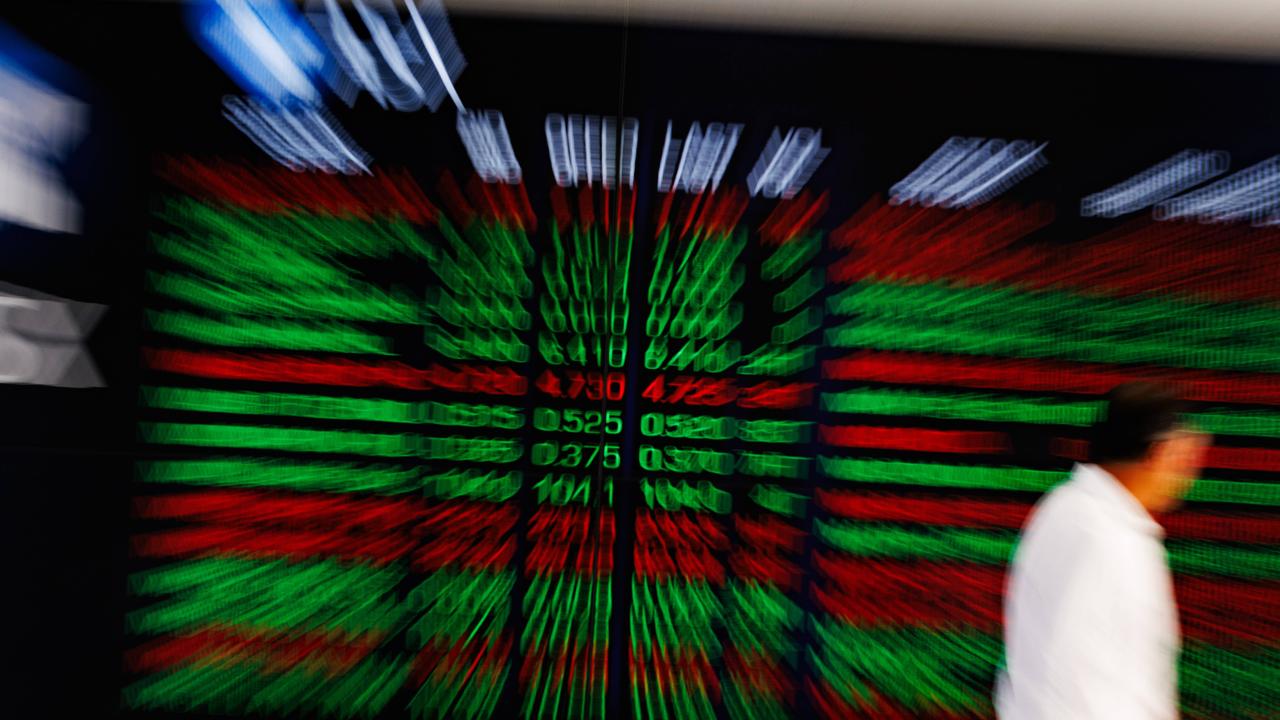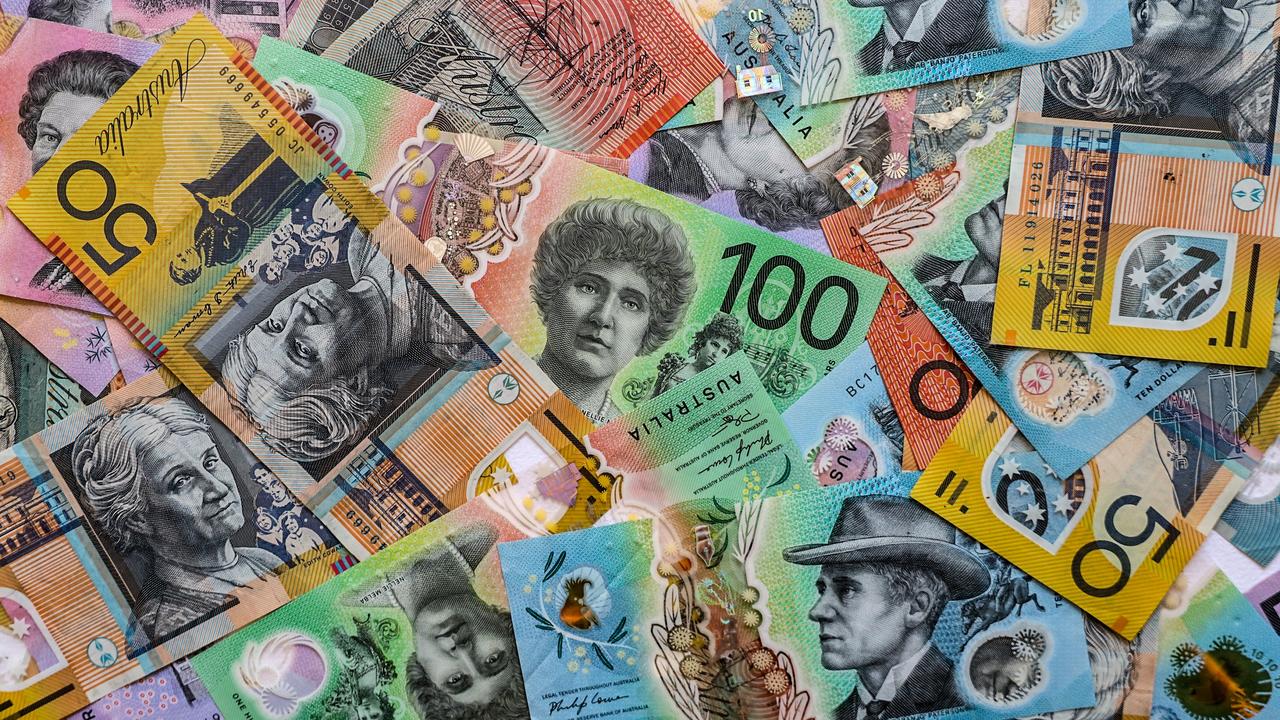Why the Aussie dollar is crashing
THE Australian dollar has plummeted to two-and-a-half year lows and is heading for 60 US cents. Here’s what’s driving it.

Dollar
Don't miss out on the headlines from Dollar. Followed categories will be added to My News.
THE Australian dollar has plummeted to two-and-a-half year lows and could be heading to the “mid to high 60s” by next year, experts say.
At 8am today, the Australian dollar was buying 70.79 US cents after dropping as low as 70.66 US cents in overnight trading, pummelled by the rising greenback. The dollar is now about 13 per cent below January’s three-year high of 81.36 US cents.
Potentially soft retail sales data due for release this morning could be “another possible nail in the coffin”, with the descent to 70 US cents seeming “more imminent by the day”, IG Markets analyst Kyle Rodda wrote.
So what’s driving down the Aussie dollar?
“The principal reason it’s falling is because the yield spread, basically the difference between interest rates in the US and Australia, has turned very negative,” MacroBusiness Fund chief strategist David Llewellyn-Smith said.
The US Federal Reserve last month raised its benchmark interest rate for the third time this year by a quarter of a percentage point to 2.25 per cent. The Fed has flagged another hike in December, three more next year and one in 2020.
Meanwhile, the Reserve Bank of Australia this week kept the official cash rate on hold at its record low of 1.5 per cent. The cash rate last moved in August 2016, and there has not been an official cash rate increase since November 2010.
“The US now has much higher interest rates than we do,” Mr Llewellyn-Smith said.
“The way global markets work is you borrow in low interest rate jurisdictions and invest in high interest rate jurisdictions. It’s called the carry trade. Typically we’ve always been higher-yielding that the US. Occasionally it reverses. That’s the case right now.”
Mr Llewellyn-Smith said the yield spread on 10-year US and Australian government bonds was now “at the most negative it’s been since 1983”.
“So it’s historically negative,” he said. “That means there’s just a lot of people that want to sell the Australian dollar at the moment.”
The other big driver of the Australian dollar is the terms of trade, or the ratio of import to export prices, which in Australia’s case is basically all about coal and iron ore.
Because we sell so much of both, there is normally a very strong relationship — high commodity prices means a high Aussie dollar. That’s not the case at the moment.
Iron ore and coal prices, while nowhere near their levels during the peak of the China boom, are reasonably high.
“Right now if that relationship held, the Aussie would be up around 85 cents based on the terms of trade,” Mr Llewellyn-Smith said. “So you’ve got this tug of war between the terms of trade and the yield spread.”
Looming over it all is the third force — the growing economic war between the US and China. In a fiery speech overnight, US Vice President Mike Pence stressed that it was about much more than tit-for-tat tariffs.
“As we speak, Beijing is employing a whole-of-government approach, using political, economic, and military tools, as well as propaganda, to advance its influence and benefit its interests in the United States,” Mr Pence said.
The speech came as Bloomberg published an explosive investigation revealing how Chinese spies hacked America’s technology supply chain by sneaking compromised chips into companies including Amazon and Apple.
“You’re seeing a broadside coming right now from the Trump administration against China,” Mr Llewellyn-Smith said. “We don’t know how bad the trade war will get. We think it will get a lot worse. But it’s not just trade, it’s much broader. It’s about power and strategic ascendancy and hegemony.”
All that is bad news for Australia — and in this case, the Australian dollar.
“The worse that gets the more sentiment sours about the Australian dollar,” he said. “We’re squashed between two superpowers. We depend on one for defence and another for prosperity.”
The RBA, for its part, is completely boxed in.
“They are totally unable to raise rates,” Mr Llewellyn-Smith said.
“It would definitely like to hike because it would reload the ammunition. We think it’s more likely they’ll cut them than raise them. The market expectation of RBA rate hikes is a joke. We’ve got house prices falling at 10 per cent per annum. The RBA’s going to try and hold.”
That means the yield spreads are going to get worse. Combined with the trade war, but supported by stable commodity prices, the overall effect is going to be downward pressure on the dollar.
“Sometime next year, mid- to high-60s we think is more than reasonable,” Mr Llewellyn-Smith said. “People say forecasting currency is a mug’s game. There are an impossible number of variables. But those are the primary drivers.”
Originally published as Why the Aussie dollar is crashing



